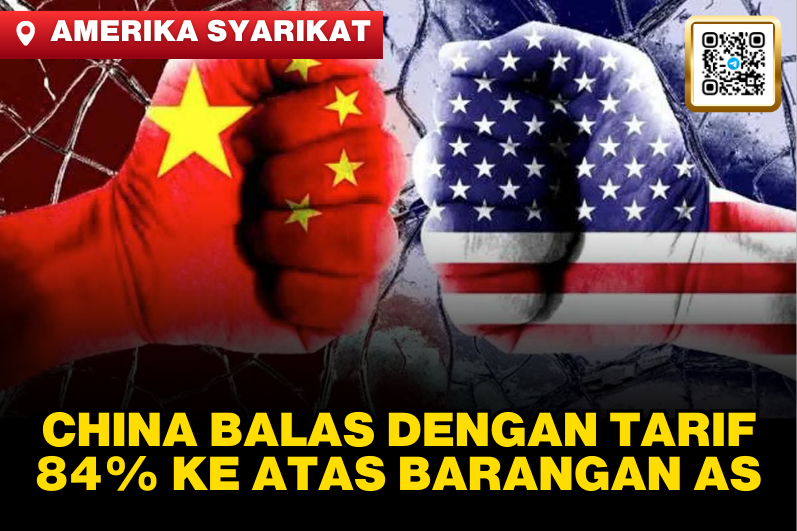(Washington, Beijing, 9th October) On Tuesday (8th October), the White House made a significant announcement: due to China's failure to roll back its retaliatory measures, the US decided to increase tariffs on Chinese goods by 50%. As of Wednesday noon (Malaysian time), the total US tariffs on China have surged to an astonishing 104%. In retaliation, China's State Council declared it would raise tariffs on US imports from 34% to 84%, starting at 12:01 PM on Thursday (10th October).
The Chinese government quickly responded to Washington's decision. The Tariff Commission of China’s State Council issued a formal statement criticizing the US for intensifying trade tensions. The statement labeled the move as a "misstep," arguing that this action not only infringes upon China’s legitimate interests but also damages the multilateral trade system that is built on international rules.
According to the Chinese State Council's announcement, effective from Thursday, China will increase tariffs on US imports by 50%, raising the tax rate from 34% to 84%. This adjustment marks a significant escalation in the ongoing trade conflict between the two economic giants.
China Turns to WTO for Dispute Resolution
In addition to the tariff hike, a spokesperson from China’s Ministry of Commerce revealed that China had lodged a formal complaint with the World Trade Organization (WTO) over the new US tariffs. The spokesperson emphasized that the US's actions violate WTO rules and represent a significant escalation in the trade war.
According to China’s Ministry of Commerce, these "equivalent tariffs" are yet another instance of the US imposing unilateral sanctions that contravene established trade norms. In their view, these measures are not only harmful to Chinese interests but also undermine the global trade system that depends on cooperation and mutual respect.
China remains firm in its stance, and officials made it clear that Beijing will continue to defend its rights in accordance with international law, while also safeguarding the principles of the WTO and fair trade.
White House Stance and Negotiation Hopes
Earlier, White House Press Secretary Sarah Sanders stated that China's retaliatory actions were "mistaken" and counterproductive. She remarked that if the US were hit first, President Trump would respond with a "stronger punch." However, she also reiterated that the US remains open to trade negotiations, should China decide to come to the table.
In a social media post, President Trump voiced his belief that China was eager to negotiate but uncertain about how to initiate talks. He expressed confidence that an agreement could be reached, but he emphasized that the ball was in China’s court. US officials later clarified that while negotiations with China are a possibility, the immediate priority is to consult with other trading partners, including countries like Japan and South Korea.
The US Trade Representative, Robert Lighthizer, confirmed that the US will continue engaging in tariff negotiations with other trade allies, although no specific timetable has been set for talks with China. Lighthizer stressed that there would be no immediate tariff exemptions or exceptions.
China's Strong Message on Sovereignty
China's Ministry of Foreign Affairs spokesperson, Lin Jian, responded firmly to the situation. He stated that China’s legitimate development rights must be respected, and that the country’s sovereignty, security, and development interests are non-negotiable. He further emphasized that China would take all necessary steps to protect its rights and interests.
The WTO, in a statement released on Tuesday, confirmed that China had requested consultations with the US through the WTO’s dispute settlement mechanism. China argues that the new tariffs are inconsistent with the US’s obligations under several international trade agreements, including the 1994 General Agreement on Tariffs and Trade (GATT), the Customs Valuation Agreement, and the Agreement on Subsidies and Countervailing Measures.
The escalating tariffs and ongoing tensions show how the trade dispute between the US and China continues to have global ramifications. With both countries now entangled in a battle over tariffs and trade practices, the international community watches closely to see if diplomatic negotiations can pave the way for a resolution.
For the latest updates, visit here.




Leave a Reply